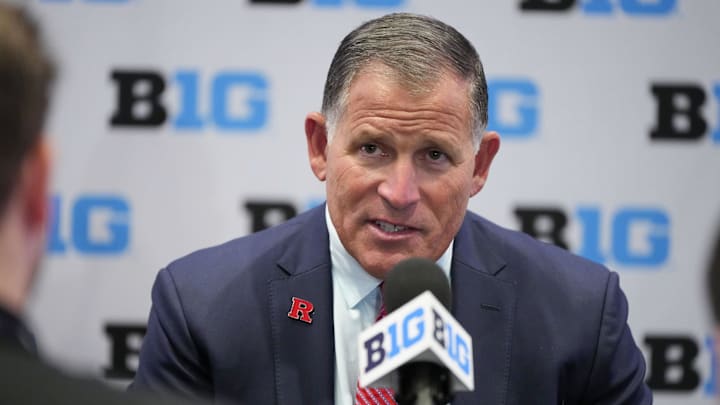At his weekly media availability reporters asked Rutgers coach Greg Schiano about the trouble his secondary had stopping the Washington passing attack and offense.
The Scarlet Knights lost Friday night in Seattle, 38-19. Husky quarterback Demond Williams riddled them for 402 yards and two touchdowns, part of an offensive onslaught that gobbled up 579 yards, erupting for 28 points in the second half after the visitors led 13-10 at halftime.
Schiano said, "Now you're certainly going even up another notch in competition." Meaning the Ducks represented an entirely different level of offensive threat than the 5-1 Huskies. By now he's reviewed plenty of film of both teams, and graded how his team played in Husky Stadium.
Schiano is crafty, and he's been at this game a long time, in his second stint in Piscataway in a career that's spanned 37 years including four seasons in the NFL.
He's generally known as a no-nonsense guy. Coaches nearly always speak most respectfully about the opponent ahead of them, but at the same time, he's openly acknowledging what's widely known. The Ducks are another notch in competition compared to the Huskies.
He just said the quiet part out loud, because film don't lie. One bad week doesn't change the facts.
To make that evaluation stick, the Ducks have to find a better response to simulated pressure, because they will certainly see more of it, at Rutgers and throughout the rest of the year.
Sick sim pressure from the boundary by Indiana for the 3rd-down sack. Oregon’s in a full slide to the right, but the Hoosiers drop to that side while bringing a CB from the left, leaving two free rushers for Dante Moore to deal with. pic.twitter.com/qYhj3vqUdQ
— John Evans (@_jpevans_) October 13, 2025
As John Evans of 247Sports explains, defenders on the offense's right fake a blitz and drop off, allowing two rushers on the left to come free. Moore and his offensive line are fooled completely. One way to counteract pressure like this is a quick release to the back slipping out behind the blitz, who has space one-on-one with the defender sliding over.
A tendency that Moore and Will Stein have to work on is that under duress he tends to move to his right, and he will nearly always look to his right, locking on one option. His clock goes haywire. Recognizing the best option quickly comes with time, film study and experience.
Among fans, the knee-jerk reaction when protection fails is to blame the offensive line, but pass protection is a team effort. The quarterback has to recognize pressure and adjust the protection. Sometimes he has to audible to a better play.
The offensive line has to communicate and account for the blitz. If a back is assigned to pass protection, it's his job to stop a blitzer. Receivers have to read the defense too, looking for the ball quickly, adjusting their routes if necessary.
The Ducks will work on all this in practice. An experienced quarterback can exploit a blitz for easy yards, but it takes recognition and quick thinking. Bo Nix and Dillon Gabriel did it all the time.
One devastating counter to aggressive blitzes is effective use of the run. Blitzers take themselves out of the play when the Ducks run the football with authority.
